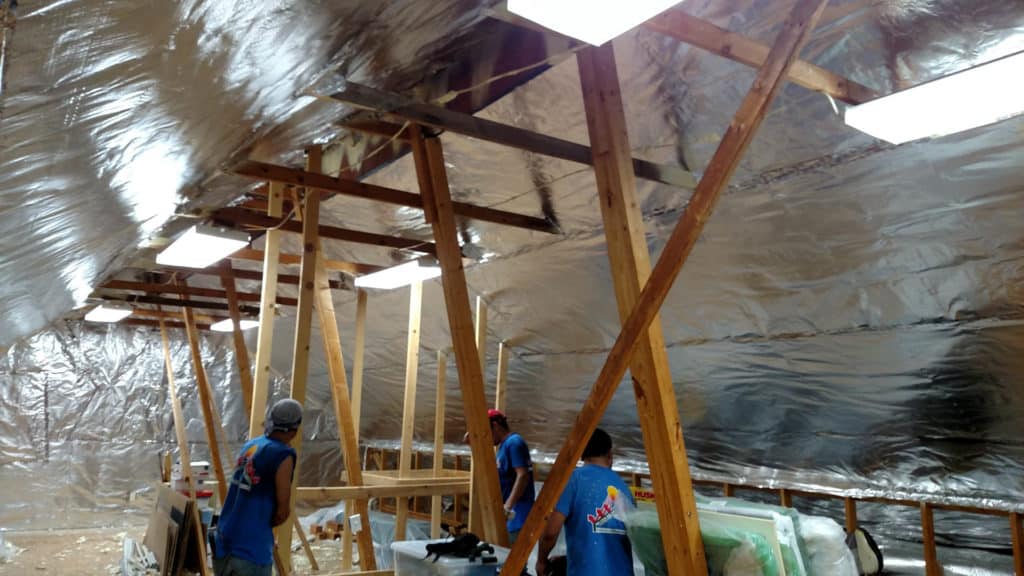Radiant barriers have become increasingly popular in Houston as homeowners seek effective ways to improve energy efficiency and lower utility bills. Radiant Barrier Contractors Houston offer a solution that not only provides cost savings but also contributes to a more comfortable living environment. In this article, we will explore the benefits of radiant barriers, how they work, and why hiring professionals for installation is crucial.
Introduction
In the scorching heat of Houston, finding ways to keep homes cooler without breaking the bank is a top priority. Radiant barriers have emerged as an innovative solution, reflecting and reducing the heat that enters your home. These energy-efficient technologies are gaining attention for their effectiveness in enhancing indoor comfort.
Understanding Radiant Barriers
Radiant barriers are materials typically installed in attics or roof systems. They are designed to prevent radiant heat transfer, which is when heat radiates from a hot surface to a cooler one. Unlike traditional insulation that resists conductive and convective heat flow, radiant barriers focus on reducing radiant heat.
How Radiant Barriers Work
Radiant barriers consist of reflective materials, often aluminum foil, that are installed with an air gap between them and the roof. When the sun’s rays hit the roof, the barrier reflects a significant portion of the radiant heat away from the living space, preventing it from being absorbed by the interior surfaces.
Benefits of Radiant Barriers
- Improved Energy Efficiency: By reducing heat transfer, radiant barriers help maintain lower indoor temperatures, reducing the need for excessive air conditioning.
- Lower Utility Bills: With the decreased demand for cooling systems, homeowners can experience substantial savings on their energy bills.
- Enhanced Comfort: A cooler home means a more comfortable living environment, especially during the hot Houston summers.
- Extended Roof Lifespan: Radiant barriers can help protect your roof by minimizing temperature-related stress.
- Environmentally Friendly: Using less energy for cooling contributes to a smaller carbon footprint.
Finding the Right Contractor
When considering the installation of a radiant barrier, it’s crucial to find experienced and reputable contractors. Look for professionals who specialize in energy-efficient solutions and have a proven track record in radiant barrier installations.
Professional Installation Process
A reliable contractor will assess your home’s specific needs before recommending the appropriate radiant barrier solution. The installation process involves careful measurements, proper material placement, and attention to detail to ensure optimal performance.
Cost Considerations
While there are upfront costs associated with installing radiant barriers, the long-term savings in energy bills make it a wise investment. The cost varies depending on factors such as the size of your home, the chosen radiant barrier material, and the complexity of the installation.
Comparing Radiant Barriers to Other Insulation Methods
Unlike traditional insulation methods, radiant barriers focus solely on radiant heat transfer. They complement existing insulation by addressing a different aspect of heat flow.
Common Misconceptions
- Radiant Barriers Replace Insulation: Radiant barriers are most effective when used in conjunction with traditional insulation.
- Radiant Barriers Only Work in Hot Climates: While more beneficial in warmer regions, radiant barriers can also help retain indoor heat during colder months.
Maintaining Radiant Barriers
Fortunately, radiant barriers require minimal maintenance. Periodic inspections for tears or damage and keeping the attic well-ventilated are usually sufficient.
Enhancing Home Value
The energy efficiency and cost savings associated with radiant barriers can make your home more attractive to potential buyers, enhancing its resale value.
Environmental Impact
Using less energy not only reduces utility bills but also helps conserve natural resources and reduce greenhouse gas emissions.
FAQs about Radiant Barriers
- Are radiant barriers a replacement for traditional insulation? No, radiant barriers complement traditional insulation by addressing different modes of heat transfer.
- Can radiant barriers be installed in existing homes? Yes, radiant barriers can be installed in both new and existing homes.
- Do radiant barriers require maintenance? Minimal maintenance is needed; periodic checks for damage and ensuring proper ventilation is usually sufficient.
- Are radiant barriers environmentally friendly? Yes, using less energy for cooling contributes to a more sustainable environment.
- Can radiant barriers help in colder climates? Yes, radiant barriers can help in colder climates by reflecting indoor heat back into the living space.
Conclusion
Radiant barriers offer a promising solution to the energy efficiency challenges faced by homeowners in Houston. By effectively reducing heat transfer, lowering utility bills, and enhancing indoor comfort, these barriers prove their worth as a valuable addition to modern homes. When considering a radiant barrier installation, remember to consult with experienced contractors who can guide you through the process and ensure optimal results.


